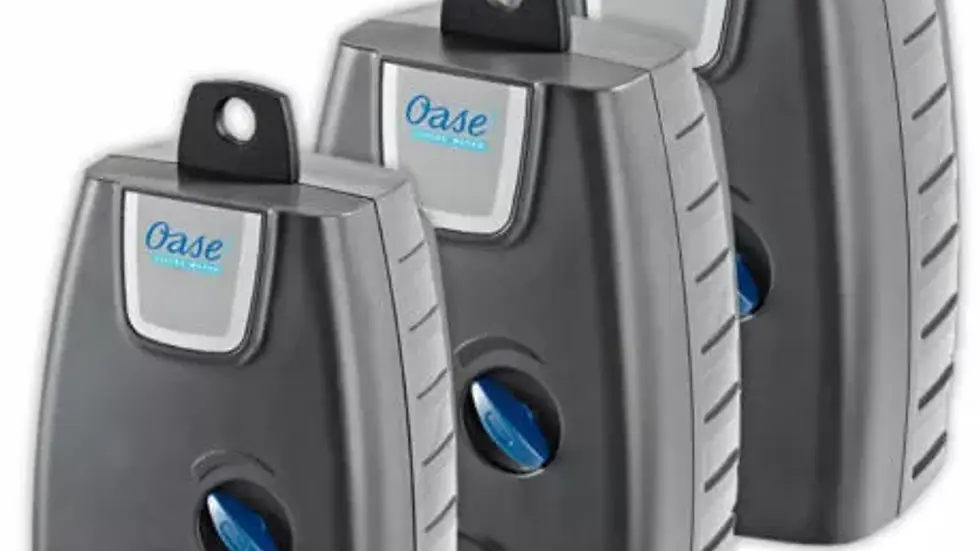Keeping Your Coldwater Fish Cool During Heatwaves
- ByrkleyAquatics

- Jun 21
- 4 min read
Updated: Jul 31
Introduction
Coldwater fish are often considered low-maintenance. However, they are not heatproof. Many coldwater species, including goldfish, white cloud mountain minnows, and dojo loaches, prefer cooler temperatures. When the weather warms up, these fish can become stressed or unwell. In this guide, we’ll explore what happens when temperatures rise in a coldwater tank. We'll also discuss how to recognize signs of overheating or low oxygen levels. Finally, we’ll provide practical, safe steps to help your fish stay healthy during a heatwave.
The Dangers of High Temperatures
Most coldwater fish thrive best between 18–22°C (64–72°F). However, some species can tolerate slightly broader temperature ranges. During hot spells, indoor tanks can exceed these ideal temperatures, especially in unventilated rooms or if tanks sit in direct sunlight.
Effects of Overheating on Coldwater Fish
When the water temperature rises too high, several issues arise:
Oxygen levels drop: Warmer water holds less oxygen, making it harder for fish to breathe.
Increased fish metabolism: This raises waste levels in the tank.
Stress on beneficial bacteria: Bacteria may die off or become stressed.
Unstable water parameters: Fluctuating conditions can lead to further complications.
These factors put stress on the aquarium's ecosystem. If not addressed, they can lead to illness or loss of fish.
Recognizing Heat Stress in Fish
It's crucial to spot the signs of heat stress early. Look for the following symptoms:
Gasping or hanging near the surface
Sluggish or erratic swimming
Pale or clamped fins
Lack of appetite
Hovering near the filter outflow or bubbler
These behaviors indicate that your fish may be struggling. It's important to act quickly, but avoid rushing into drastic changes.
Initial Steps Before Taking Action
Before attempting to cool the water, check the following:
Reliable temperature readings: Use a digital or stick-on thermometer instead of guessing.
Oxygen levels: Monitor oxygen, as warmer water contains less of it.
Test water quality: Check for any spikes in ammonia, nitrite, or pH.
Examine your filter and aeration: Ensure that they are functioning properly.
Avoid large water changes: Rapidly adding colder water can shock your fish and disrupt beneficial bacteria.
Effective Ways to Cool a Coldwater Aquarium
Here are some practical methods to help cool your coldwater setups:
1. Shade the Tank
Close curtains or blinds during the day. If possible, move the tank to a location that does not receive direct sunlight. Even a few hours of sunlight can cause a significant temperature spike.
2. Switch Off the Lights
Turn off the aquarium lights during heatwaves. This is particularly crucial if you are using older-style bulbs or if lights are not needed for aquatic plants.
3. Use a Fan Across the Water Surface
Position a small fan to blow across the surface of the water. This encourages evaporation, which naturally cools the tank. Ensure that lids are secured or slightly propped open. Use caution with jumpy fish.
4. Float a Bottle of Ice
Freeze a bottle filled with dechlorinated water and float it in the tank. This method provides slow, controlled cooling. Avoid placing ice cubes directly into the tank or making rapid temperature changes.
5. Perform a Small, Controlled Water Change
A small (5–10%) water change using slightly cooler dechlorinated tap water can help lower temperatures. However, be cautious not to overdo it; the mantra is slow and steady.
6. Increase Aeration

Oxygen is crucial for fish health, especially in warmer conditions. Add an air stone or increase the surface agitation with your filter outflow to boost gas exchange.
7. Feed Less
While fish may become more active in warmer temperatures, their digestion can become compromised. Reduce feeding amounts to prevent leftover food from decomposing and adding waste to the tank.
8. Avoid Overstocking
Overstocked tanks can face more severe challenges during heat spells. If your tank feels cramped, consider rehoming some fish or upgrading to a larger tank.
9. Consider Chillers for Sensitive Species
For those keeping sensitive coldwater species or living in areas with prolonged heat, investing in a dedicated aquarium chiller can be wise—especially for larger or valuable setups.
Planning Ahead for Hot Weather
To better prepare for hot conditions, consider these tips:
Position the tank away from windows, ovens, or other heat sources.
Use a room thermometer to monitor the ambient temperature.
Invest in an aquarium thermometer with high-temperature alerts.
Run your tank lights during off-peak hours (evening or overnight) if necessary.
During summer, consider slightly understocking the tank.
Summary: A Thoughtful Approach to Temperature Control
Although coldwater fish may appear resilient compared to tropical species, they are still vulnerable to extreme temperatures. It's essential to remain calm and avoid drastic measures, such as large water changes, which can cause more harm than good.
Instead, implement these simple strategies—shade, improved aeration, small water changes, and fans—to maintain a stable and safe environment for your fish. Regularly monitor your tank in warm weather and take action early if you notice rising temperatures. With careful planning and deliberate action, your coldwater fish can navigate the hottest days of the year with ease.





